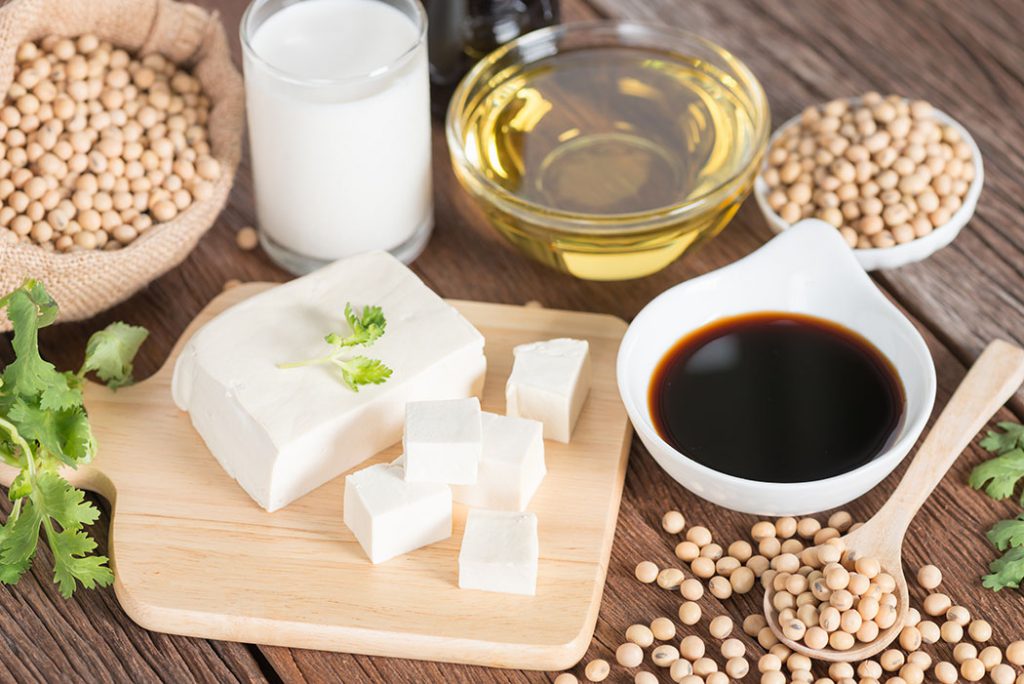How to cook grains: Soybeans

Learning how to cook grains like soybeans can be very daunting especially considering soybeans are in a lot of food and end products that can be used in recipes! Soy milk, soy oil, tofu, miso, soybean paste, soy butter, whole roasted soybeans can all be used in many different recipes and culinary creations. Learn how to cook them below!
What types of soybeans are there for cooking?
Soybeans and soybean end products like soymilk, soy oil and soy butter are so versatile and can be used in a lot of dishes. These can be used interchangeably within many recipes and dishes as well!
- Create a cream-based dish that calls for milk? Try using soymilk!
- Substitute soy oil instead of cooking oil or vegetable oil!
- Allergic to nuts or peanuts? Try a nut-free spread like soy butter for a high protein and tasty spread for hummus, baking, toast, crackers or fun kid snacks!
Other soybean end products like soybean paste (miso), tofu or whole-grain soybeans can easily be cooked and added to recipes.
Soybean paste or miso is a savoury, Japanese fermented soybean paste that is the staple for many Japanese dishes including miso soup, sauces and salad dressings!
Tofu is made from condensed soy milk that is cooked into blocks. It is a high protein dish that can be added onto noodles, made into a burger, added to a smoothie or fried for a tasty dish!
Whole roasted soybeans or soy nuts are a very simple and tasty dish- whole-grain mature soybeans are roasted for a flavourful and high protein dish. These can be a perfect snack, side dish or added to salads for a protein kick!
How to cook soybeans
Miso
Miso is a very easy dish to prepare. Simply follow the directions on the packaging! Miso paste can be dissolved in broth or water for a tasty sop dish, or stirred into other liquid ingredients to make salad dressings, marinades or glazes. Miso can also be added to a creamy pasta dish – simply add miso to a saucepan and whisk until it has turned into a liquid.
Tofu
Before cooking with tofu, find out what type of tofu the recipe calls for silken, medium, firm and extra firm. The difference between these is simply the texture or how much water was pressed out of the tofu blocks when they were created. The more water that was pressed out, the firmer the texture will be, and the different textures will impact how the tofu will work in the recipe.
- Silken tofu is great for creamy and blended foods (smoothies, desserts, hummus, salad dressings)
- Medium tofu is pretty delicate and works well in soups.
- Firm tofu absorbs flavours well and is great in a stir fry or can be pan-fried or crumbled into dishes.
- Extra-firm tofu is the ideal choice for blocks or cubed tofu and can easily be cooked and added to pasta, noodles or stir-fries.
Tofu can be cooked on the stovetop, in the oven and on the grill. Simply squeeze out most of the water from the tofu, cut or crumble into chunks, toss in oil, then cook to the desired crispiness. Tofu is cooked when the outside of crispy and browned, and the inside if chewy and creamy. Want tofu to be extra crispy? Toss in cornstarch before cooking!
#TrainWithGrainsTip: Tofu gets a bad rap for being incredibly bland or tasting too beany. Don’t forget to spice up your tofu for optimal flavours! Think chilli powder, bbq seasoning, or a curry spice!
Roasted Soybeans
Roasted whole-grain soybeans or soy nuts are a high protein, tasty snack! Simply soak soybeans in water overnight or until the beans have expanded to triple size. Pat dry, and lightly coat with cooking oil, and layer on a baking sheet. Add to oven for 15 minutes at 350 degrees celsius, or until soybeans are golden brown and crunchy.
Try these great soybeans recipes!
